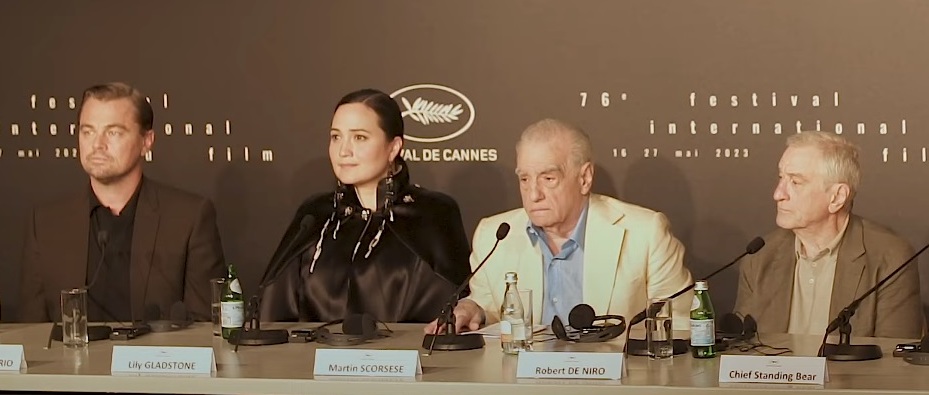
“Killers of the Flower Moon” doesn’t let you rest, break or breathe. Instead, it keeps you holding onto your seat, trying to figure out what comes next.
Released on Oct. 20, this film tells the true story of how a white businessman orchestrated the murders of Osage Nation members in 1920s Oklahoma after oil is found on reservation land. Directed by American filmmaker Martin Scorsese, viewers watch the story unravel as discrimination against Indigenous peoples runs rampant — until the FBI steps in.
Few directors are quite as powerful as Scorsese, who has created chatter from both film nerds and the average moviegoer since the 70s.
His most recent falls in line with his other previous films and is a riveting watch from start to finish. You’ll cling to the edge of your seat as you realize that the three-and-a-half-hour runtime goes by quicker than expected.
In many ways, “Killers of the Flower Moon” feels like a culmination of Scorsese’s experiences within his career. It is his most complete film, using many old ideas that he has consistently returned to in a new, more reflexive way.
There are ideas that echo back in this work from past iterations of Scorsese. For example, Scorsese takes influence from his themes of family and toxic masculinity in both “Goodfellas” and “The Wolf of Wall Street” as he explores Leonardo Dicaprio’s character — Ernest Burkhart — and his family’s futile desire to cling to power.
Despite DiCaprio’s emotive performance and Robert DeNiro’s commanding stage presence as criminal mastermind William Hale, they are blown out of the water by newcomer Lily Gladstone, who plays Mollie Burkhart, oil empire heiress, DiCaprio’s wife and a member of the Osage Nation.
Sharp on her toes, Gladstone captivates the audience with her emotional range that comes through with a single look.
Her performance connects back to what is so special about Scorsese as a director. He is able to develop complex characters regardless of their gender, and Mollie is no different. She is fierce, sensitive, loyal and strong.
Just like his ability to develop strong characters regardless of gender, Scorsese develops the characterization of the indigenous people of Osage County just as strongly. His respect for the culture and history of these people is evident in the film.
The movie shifts around two-thirds of the way through and picks up steam as the characters unravel. What was first an old mystery caper now becomes a law drama, a subtle shift that it feels natural to the story.
It’s hard to think of anything wrong with this film. With “Killers of the Flower Moon,” Scorsese proves once again why he is a master of his craft.
Rating: 5/5






